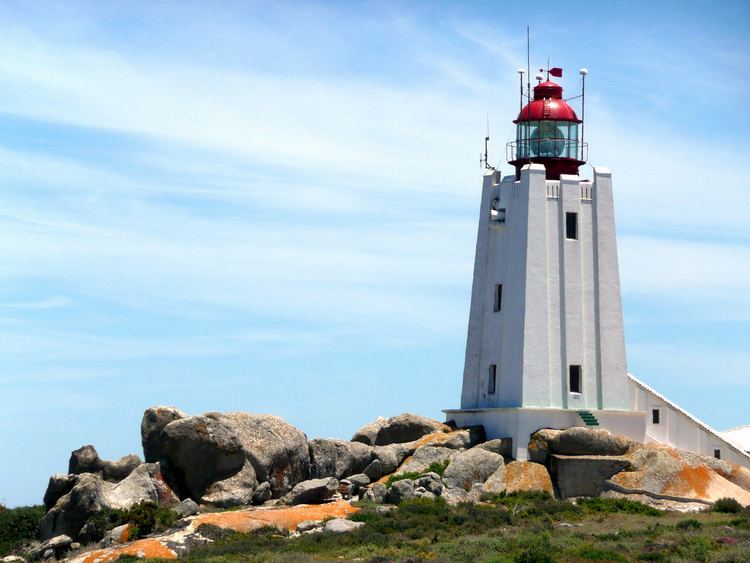 | ||
Cape columbine nature reserve also known as tietiesbaai
Cape Columbine is well known for its lighthouse, the last manned lighthouse built on the South African coast. [1]. The Cape Columbine Lighthouse was commissioned on October 1, 1936. Both the headland and lighthouse derive their name from the barque Columbine, that was wrecked 1.5 km North of the lighthouse on March 31, 1829 [2].
Contents
- Cape columbine nature reserve also known as tietiesbaai
- Map of Cape Columbine West Coast Peninsula South Africa
- South African lighthouse firsts
- Shipwrecks
- Surrounds
- References
Map of Cape Columbine, West Coast Peninsula, South Africa
South African lighthouse firsts
Shipwrecks
Several ships were wrecked in the area, which is known for its multitude of submerged rocks and reefs.
Surrounds
The Columbine Nature Reserve surrounds Cape Columbine Lighthouse. On the southern side of the lighthouse is Tieties Bay (Afrikaans: Tietiesbaai). 5 km away is the fishing village of Paternoster. The coastline is well known for its sea life, especially for crawfish and abalone. Langebaan Lagoon, the West Coast National Park and a Fossil Park.
